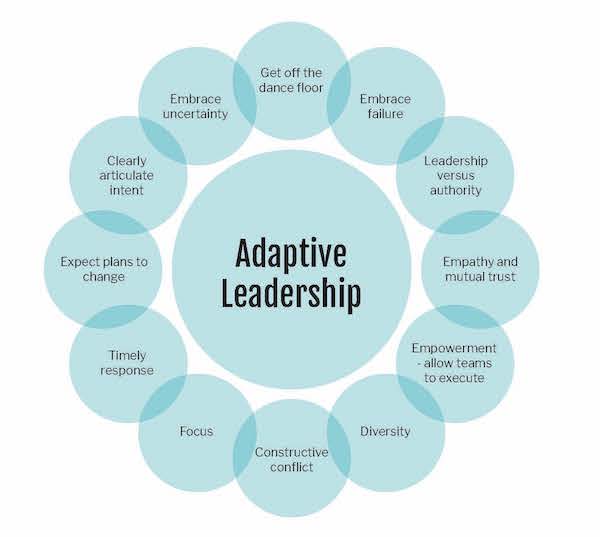In my last series of blogs, I explored the “Give It Up” model whereby true leaders need to move from a command and control style of leadership and towards one of delegation and trust.
Not only do leaders need to give up control, but they also need to become adaptive leaders and be able to chart a course when they cannot predict the outcome of their choices.
My Adaptive Leadership Model below illustrates what a leader has to undertake to become an adaptive leader.

Get off the dance floor
In a world of constant and relentless change, the days of making a plan and waiting for it to unfold are far gone. When change is constant, what seemed like a good plan yesterday may not seem like a good one tomorrow.
Adaptive leaders need to be able to change direction quickly based on a rapidly changing environment. Therefore, adaptive leaders need to be able to observe what is happening and make interventions when needed.
In adaptive leadership, this ability to perceive, observe, and intervene is often described as moving continually between a dance floor and a balcony. Ron Heifetz and Marty Linsky coined this metaphor in their book The Practice of Adaptive Leadership.
When on the dance floor the observation may be very different from when on the balcony. When you are dancing you are focused on the music, your partner and your impression is that everyone is having an awesome time.
When you retreat to the balcony and observe the dance floor, you may observe that there are some people not dancing at all and there appears to be a departure of people from the dance floor when the music speeds up or gets louder.
These are observations you could not make when on the dance floor. Now you have a clearer picture of what is really happening.
If leaders then want to intervene to change what is happening, they have to get back onto the dance floor and operate in the fray as opposed to above it. Therefore, adaptive leaders operate both on the balcony and on the dance floor.
When on the balcony leaders take a step back and gain a clear view of what is really happening and can look at the bigger picture.
Adaptive leaders need to create a space where they can review and reflect on what is happening. Adaptive leaders continually move between the dance floor and the balcony. They are able to determine what amount of time to spend on the dance floor versus on the balcony.
On the balcony, they gain perspective and make observations. On the dance floor, they make interventions.
Game score
Leadership in the face of volatile, uncertain, complex, and ambiguous change has to be adaptive.
Adaptive leaders need to know when to operate in the fray, and when to get off the field and watch from the sideline.
They will embrace losing a game as a learning opportunity and the team will bounce back ready to play the next game. They will have empathy and be able to walk in another’s shoes to understand their perspective. Players are inspired to be accountable and make decisions.
Adaptive leaders expect and embrace change. It is their reality. The teams they build are dynamic and embrace change, and they channel any uncertainty into positive outcomes through collaboration and communication.
Adaptive leaders clearly articulate their intent and then let the players get on with the game. The players will ultimately win or lose the game.
In subsequent posts in this series, I will be exploring the additional elements of the Adaptive Leadership model.
Article by channel:
Everything you need to know about Digital Transformation
The best articles, news and events direct to your inbox
Read more articles tagged: Change & Transformation, Featured







